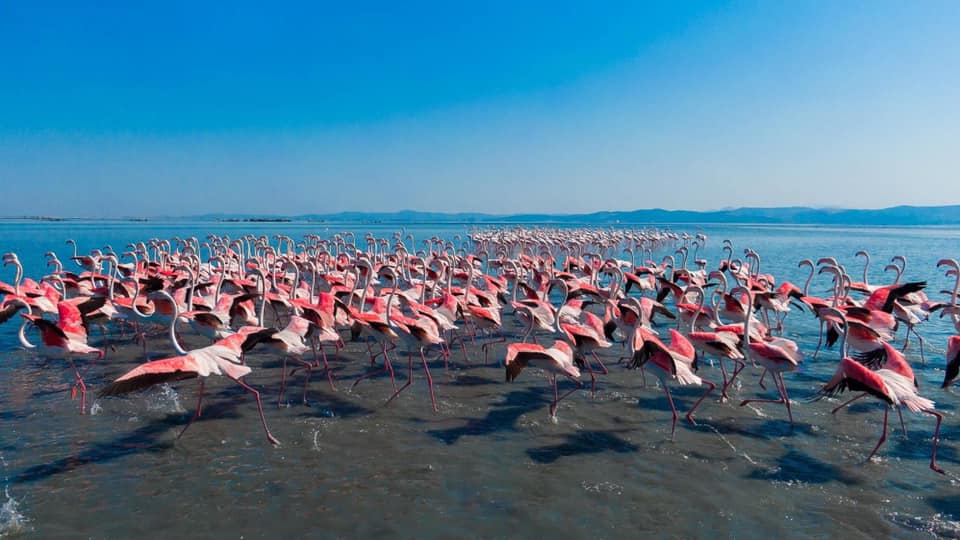The Narta Lagoon is one of the largest and most important lagoons in Albania. It is located at the southern end of the coastal plain, near the city of Vlorë. It has a total area of 41.8 km², about one-third of which, mainly the northern area, is used for the Skoefotina salt pans. This lagoon lies in the southeastern part of the maritime Gulf of Vlorë and is separated from the Adriatic Sea by a narrow coastal strip consisting of alluvial dunes with a total length of about 8 km and a width of 100 to 1400 meters. It was formed by the continuous accumulation of solid deposits from the Vjosa River.
The Narta Lagoon and Zvernec are located a few kilometers from the city of Vlorë, in its northwestern part. The first view of them can even be seen from the hills of the salt pans as you approach the city of Vlorë along the road from Fier. Zvernec, with its small island, is 14 km away from Vlorë, where the Sode Forest ends and the Narta Lagoon begins. The entire landscape creates a very beautiful natural ensemble, full of contrasts and where the beauty and tranquility of this place are in harmony. Besides its natural beauty, the Monastery of Saint Mary, located on the island of Zvernec, is of particular interest to visitors. It can be reached via a narrow wooden pedestrian bridge. The monastery is a typical Byzantine construction built in the 10th century AD. It once housed a very rich ecclesiastical library. The last monk left the monastery in 1967, when religious institutions in Albania were closed. For a long time, the monastery remained closed, plundered, and burned. During the communist era, the island of Zvernec served as a place of exile for opponents of the regime, and the monastery as their shelter. After 1990, the monastery resumed its religious function. Today, it has been restored and is very interesting to visit. Particularly on August 15th, which coincides with Saint Mary's birthday, the monastery and the entire island are filled with numerous believers and visitors who spend the entire night on the island, lighting fires and roasting the local livestock, which tastes very good. However, it is not only on this day that the monastery remains populated. Throughout the summer, the monastery is never empty. The Orthodox Church organizes camps for children from all over the country. Not only Zvernec with its island and monastery but the entire area with the lagoon and the sea constitute a very interesting and attractive ecosystem for tourists. With an area of 41.8 km², the Narta Lagoon occupies the entire northwestern part of the Gulf of Vlorë and is separated from the Adriatic Sea by a narrow strip of land consisting of alluvial dunes with a total length of 8 km and a width of 100 to 1400 meters. Since the lagoon communicates with the sea through two channels, its water is salty. This has created the opportunity for about one-third of the lagoon to be used for salt extraction.
The dunes of Narta are also of particular interest to visit. They are located to the west of the Narta Lagoon, in the sandy strip that separates the lagoon from the sea. This is a group of sandy dunes formed by wind action. The length of the dune strip reaches several kilometers, up to Poro. They have a height of up to 5–6 meters and a width of up to 20–30 meters. They are covered with herbaceous vegetation as well as small salt-loving shrubs. About 30 years ago, some parts of them were planted with trees like pine and acacia. Their growth and condition are good. The dunes have scientific (geomorphological), aesthetic, tourist, and economic values, as they protect the arable lands to the east from being covered by the sand brought by the wind from the beach, etc. They can be visited by following the itinerary from the city of Vlorë – the salt pans – the Narta coastline – the water pump station.


